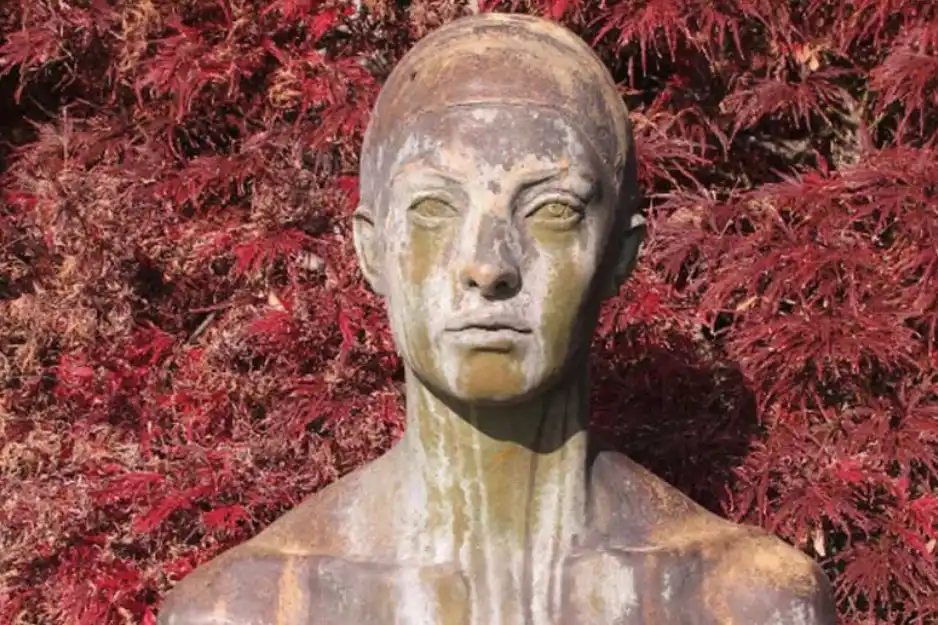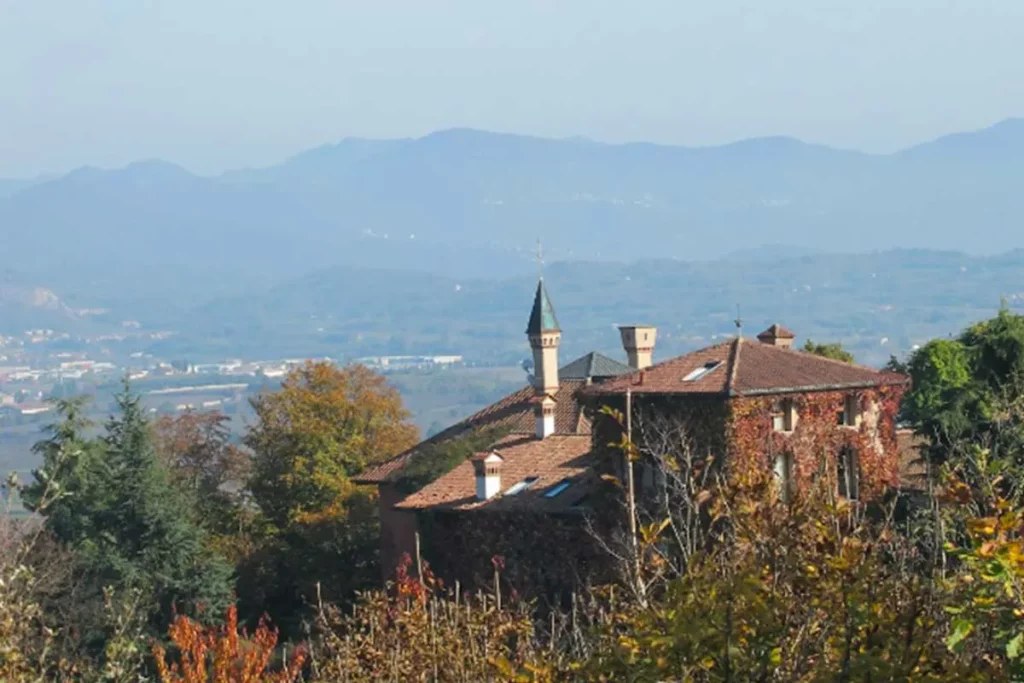The link between a hotel and its territory: the Albereta has given Franciacorta more than Franciacorta has given Albereta, in terms of image and message
A bond between: creating the consortium and respecting its rules
Franciacorta is an example of an Italy that has become a system: helping each other, coordinating and regulating, protecting and promoting a territory. One finds a sense of patriotism, a value. By contrast, one can see how what has happened in Franciacorta has not happened in Oltrepò Pavese – perhaps a start of it can be seen today.
Oltrepò was mistreated in the 1970s: its vineyards presented the wine of Milan, the popular wine, and so thinking for the vast customer base, there was no evolution of quality. Differently and with foresight, in Franciacorta the producers imposed a specification on themselves, formed a bond between them by creating the consortium and respecting its rules.
A bubbly wine in Franciacorta using the champenois method
Franciacorta is bounded to the north by the Alps and to the south by a chain of tectonic mountains that were formed fifty million years ago. Fifty thousand years ago, the glacier came down from the Alps, bringing the debris that forms the hills today. It is a soft, porous soil that allows water to drain.
The tectonic mountains block the hot summer air, the African siroccoes; from the north, the lake water cools everything down. It is never too hot in Franciacorta, which helps the vineyards. A bubbly wine was made in Franciacorta using the champenois method on hillside grape harvests.
The lands of Franciacorta as the lands of Champagne
The gamble then is the game now: beyond the value of individual wineries, it is the terroir that must create world renown. The lands of Franciacorta as the lands of Champagne. The respect, the area – the game – is played between the two countries. Not so much between the companies that were born in these lands and today sustain the area, giving jobs and pride to those who live there.
Abbot Dom Pérignon or the Benedictine monk
The land of Champagne is high in latitude – the land produced sour wines. To drink them, people added sugar. They did this in the glass directly, before drinking it and by trial and error, it was bottled and left alone. The sugar created fermentation and bubbles.
Legend and tradition would have it that the invention was the merit of Abbot Dom Pérignon. Some however see the Benedictine monk as the one who improved the method. The Sun King is credited with asking, where that bubbly wine came from. From the countryside, he was told – Champagne.
The Champange lands and the Franciacorta territory
The Champagne lands account for 37 thousand hectares – a single social winery can produce up to one hundred million bottles. The French think that where there are olive trees, you cannot make long-lived wines.
In 1968, the Bellavista winery produced two thousand bottles that were not marketed – today there are still a few examples. They remain good to taste. Franciacorta has three thousand hectares. In Franciacorta the largest vineyards reach ten hectares – the largest has eleven hectares and belongs to the Counts Lecchi.
Lampoon reporting: The Albereta’s relationship with Franciacorta
The Italian selection remains nomenclature – spumante, prosecco, frizzante. In the end, those who can afford it will, and still choose a Dom Pérignon. Those who cannot afford it, will buy a substitute for it.
Every consortium system effort should work to ensure that the word Franciacorta grants more pride, dream and desire, than the word Champagne. It is not about virtuous companies, but about territory and it is about telling the story of the working, the civil and social commitment of those to this territory who maintain it, the heritage and the manual skills.
It tears at the heart strings: to see centuries-old work, an Italian skill that the world envies, humiliated by a desire for commercial massification.
At The Albereta high society and celebrity come together
Albereta has given Franciacorta more than Franciacorta has given Albereta. In alliance with Chenot and first Marchesi, The Albereta produces communication of the terroir on a high-spending clientele that functions as a reference for the masses to want to grasp its inspiration. At The Albereta high society and celebrity come together. The parameters are not accessible to all and for that reason, parameters that define the desire to buy.
Carmen Moretti: playing with chance to find wonder
The Albereta is run by a woman with the energy of a sunny day: Carmen Moretti, the soul, mind and heart of a facility that has a turnover of sixteen million euros a year. Each room is invented like a literary tale – the books, the ceramic spheres with blue lions in study pose. Artwork in the garden dialogues with the leaves of ancient trees, in the park there are the varieties and yellow of ginko.
Carmen Moretti meets all guests. When the evening comes, she is waiting for you by the fireplace amid Italian songs at the piano bar, one story still, one smile still. Every morning she reminisces how dreams have become poems – breakfast, an almond cappuccino, berries and an apricot jam from Franciacorta.
The scent of oak, musk, blue and purple flowers. Fornasetti’s designs for the pool mosaics; woven wicker for each pillow; old parquet floors remain as shiny as an Aquarama cup – Carmen Moretti leaves nothing to chance, or rather, plays with chance to find wonder.
The Albereta: the house that is a hotel
Her commitment is a constant of desire, warmth and affection – for this house that is a hotel. For Franciacorta, Carmen Moretti seems to fight like a warrior who is never tired.
In the fall, the fire stays burning in the garden, on the patio overlooking in the dark, toward the lake. The focaccia with rosemary, an almost golden orange persimmon tree among the cold leafless branches in November. The embers in the fireplaces, the velvet curtains, the hardwood decor, and the oaks that embrace you.
The Franciacorta method and process
The Franciacorta method is the champenois method, also called the classic method. Grapes are harvested in September, picked and stored. By April it becomes wine. Cuvées are made, wines are blended, the winemaker follows the chosen recipes and invents new recipes.
Yeast and sugar are added: sugar activates both yeast and alcoholic fermentation. Each house has its own yeast-treated and studied privately and discreetly. The yeasts react with the sugar and produce alcohol and carbon dioxide, which eats oxygen and becomes bubbles. The yeasts remain on the bottom, sticking to the glass.
The bottle has to be tilted and moved, day by day, so that the yeast moves and from the bottom goes into the neck of the bottle. This takes weeks. The process involves the neck of the bottle, upturned then being frozen, then uncorked: the pressure throws out the solidified inches where the yeast also remains.
Finally, the wine, goes back into the dosing machine: here a saved wine is added for topping up and if necessary, according to the winemaker’s recipe, liqueur is added. It is called brut when sugar is added.
The Albereta
Relais & Château, Via Vittorio Emanuele, 23, 25030, Erbusco – Brescia. The Albereta is located in the Franciacorta region of north Italy. Located between Lake Iseo and the hills and vineyards.




















